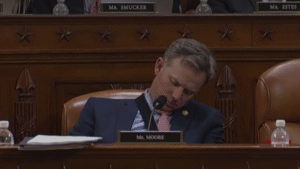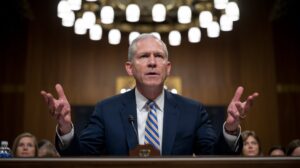President Trump authorizes the military to seize control of public land at the southern border — a historic shift that is reshaping U.S. border policy. On April 11, 2025, the Pentagon was granted full operational authority over a federal land zone known as the Roosevelt Reservation, covering critical border sections in California, Arizona, and New Mexico. This move aims to curb illegal immigration and strengthen national security — but it has also ignited legal and public backlash across the country.
What Is the Roosevelt Reservation and Why Is It Important?
The Roosevelt Reservation is a federally owned strip of land stretching 60 feet wide along the southern U.S. border. It was originally set aside in 1907 to prevent construction near the international boundary. Now, for the first time, it is being placed under direct control of the U.S. military.
This land is significant because:
- It is federally owned and not subject to state-level decisions.
- It spans key areas where migrant crossings are highest.
- It avoids many legal hurdles associated with private land seizures.
This makes it a strategic zone for rapid military deployment and construction.
Seize Control of Public Land, What Exactly Is Trump’s New Order Doing?
Trump’s directive authorizes the Department of Defense to:
- Take over operational control of the Roosevelt Reservation
- Use military resources to monitor, secure, and patrol the area
- Build or expand border infrastructure such as walls and surveillance towers
- Temporarily detain migrants or deploy rapid-response units
Seize Control of Public Land, this is a shift in how the U.S. handles border enforcement — moving from civilian-led to defense-led operations.
How Does This Change Border Land Management?
Border land control before and after Trump’s military order:
| Aspect | Before Order | After Order |
|---|---|---|
| Authority in Control | Department of Interior, Customs and Border | Department of Defense |
| Purpose of Land Use | Conservation, Border Patrol access | Military security, immigration enforcement |
| Civilian Access | Allowed (limited zones) | Restricted in many areas |
| Speed of Border Construction | Slower, legal reviews needed | Faster, military oversight simplifies process |
| Surveillance Operations | CBP, drones, and cameras | Military surveillance, drones, patrols |
What Are the Legal and Public Reactions?
This action has sparked concern from:
- Environmental groups worried about habitat destruction
- Native American tribes claiming sovereignty violations
- Civil liberties advocates highlighting militarization concerns
However, many conservative leaders and security advocates support the move, stating that traditional border security measures have failed and a more aggressive stance is necessary.
Why Now? The Data Behind the Decision
According to U.S. Customs and Border Protection, the country recorded 2.4 million migrant encounters in fiscal year 2024, the highest in history. Border states like Texas, Arizona, and California have reported overwhelmed facilities and rising tensions.
The military’s involvement aims to:
- Strengthen border enforcement capacity
- Improve surveillance coverage across remote terrain
- Accelerate construction of physical barriers
What Should Americans Expect Next?
If you live near or travel through southern border states, expect:
- Increased military presence on federal lands
- Drone and tower surveillance
- Possible restrictions on public land access
More broadly, this could lead to:
- Supreme Court challenges on federal vs. state land rights
- Policy shifts in future administrations
- A long-term precedent for military involvement in civilian zones
Final Thoughts: A Turning Point in U.S. Border Policy
This military order is not just a reaction — it marks a long-term shift in how America secures its borders. With over 2.4 million crossings in one year and rising political tensions, this move shows a clear intent to assert stronger federal control.
The outcome of this policy will shape legal, political, and social debates for years. Whether it enhances national security or sparks civil rights concerns, this is a moment of major transformation in U.S. immigration enforcement.
[USnewsSphere.com / wsj]





